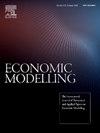How demographic changes reshape the housing sector: Evidence from China’s labor allocation and price dynamics
IF 4.7
2区 经济学
Q1 ECONOMICS
引用次数: 0
Abstract
This paper investigates how changes in fertility and mortality rates reshape labor allocation and housing prices, addressing gaps in understanding the structural impacts beyond direct housing demand. While existing literature focuses primarily on demographic influences on housing prices, sectoral labor adjustments remain underexplored. Using panel data from 297 Chinese cities (1999–2019) and an overlapping generations model, we analyze how demographic changes affect the construction and real estate services industries. We find higher fertility rates increase employment in both industries and raise house prices, while lower mortality rates increase employment in real estate services industry. These findings reveal important structural mechanisms: fertility-driven population growth boosts new housing demand, whereas aging from lower mortality shifts labor toward real estate services. Our findings offer novel insights into the general equilibrium channels linking demographic transitions and housing markets, with implications for urban planning and labor market policies in aging economies.
人口结构变化如何重塑房地产行业:来自中国劳动力配置和价格动态的证据
本文研究了生育率和死亡率的变化如何重塑劳动力分配和房价,解决了在理解直接住房需求之外的结构性影响方面的差距。虽然现有文献主要关注人口对房价的影响,但部门劳动力调整仍未得到充分探讨。利用1999-2019年中国297个城市的面板数据和代际重叠模型,我们分析了人口变化对建筑和房地产服务业的影响。我们发现较高的生育率增加了这两个行业的就业并提高了房价,而较低的死亡率增加了房地产服务行业的就业。这些发现揭示了重要的结构性机制:生育率驱动的人口增长促进了新的住房需求,而低死亡率的老龄化使劳动力转向房地产服务。我们的研究结果对连接人口转型和住房市场的一般均衡渠道提供了新颖的见解,对老龄化经济体的城市规划和劳动力市场政策具有启示意义。
本文章由计算机程序翻译,如有差异,请以英文原文为准。
求助全文
约1分钟内获得全文
求助全文
来源期刊

Economic Modelling
ECONOMICS-
CiteScore
8.00
自引率
10.60%
发文量
295
期刊介绍:
Economic Modelling fills a major gap in the economics literature, providing a single source of both theoretical and applied papers on economic modelling. The journal prime objective is to provide an international review of the state-of-the-art in economic modelling. Economic Modelling publishes the complete versions of many large-scale models of industrially advanced economies which have been developed for policy analysis. Examples are the Bank of England Model and the US Federal Reserve Board Model which had hitherto been unpublished. As individual models are revised and updated, the journal publishes subsequent papers dealing with these revisions, so keeping its readers as up to date as possible.
 求助内容:
求助内容: 应助结果提醒方式:
应助结果提醒方式:


